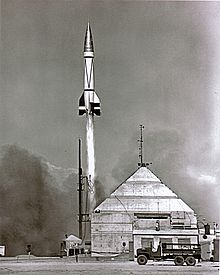The first animals sent into space were fruit flies aboard a U.S.-launched V-2 rocket on February 20, 1947. The purpose of the experiment was to explore the effects of radiation exposure at high altitudes. The rocket reached 68 miles (109 km) in 3 minutes and 10 seconds, past both the U.S. 50-mile and the international 100 km definitions of the edge of space. The Blossom capsule was ejected and successfully deployed its parachute. The fruit flies were recovered alive. Other V2 missions carried biological samples, including moss.
Albert II, a Rhesus Monkey, became the first monkey in space on June 14, 1949, in a U.S.-launched V2, after the failure of the original Albert's mission on ascent. Albert I reached only 30–39 miles (48–63 km) altitude; Albert II reached about 83 miles (134 km). Albert II died on impact after a parachute failure. Numerous monkeys of several species were flown by the U.S. in the 1950s and 1960s. Monkeys were implanted with sensors to measure vital signs, and many were under anesthesia during launch. The death rate among monkeys at this stage was very high: about two-thirds of monkeys launched in 1940s and 1950s died on missions or soon after landing.

No comments:
Post a Comment